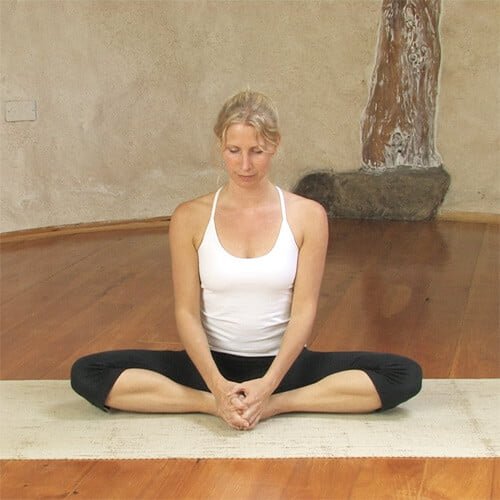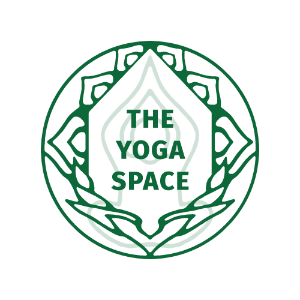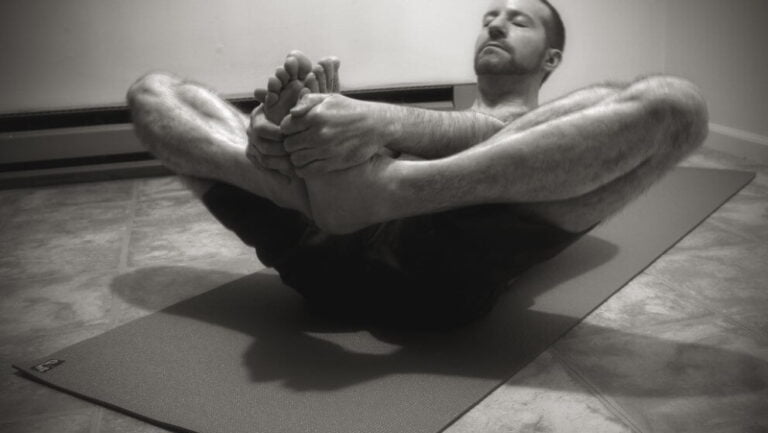Yoga is great for helping to relieve tension in the hips. Working on hip flexibility and stability can also improve lower back pain, balance, posture and prevent injuries in later life.
https://www.ekhartyoga.com/articles/yoga-hip-openers – Jenny Savage
For many of us our hips are often an area of tightness in our bodies, whether from spending a lot of time sitting or from doing a lot of sports like running or cycling.
Yoga is great for helping to relieve tension in this area. Working on hip flexibility and stability can also improve lower back pain, balance, posture and prevent injuries in later life.
While most yoga poses involve the muscles around the hips and pelvis in some way, hip openers are a specific group of asanas whose main anatomical function is to maintain and develop a healthy range of motion in the hips.
In this article we take a closer look at some basic anatomy of the hip and how we can use different yoga poses to target different areas of the hips for a healthy balanced practice.
So firstly some basic hip anatomy…
Bones and range of movement
The bones of the hip are the head of the femur (the bulb at the top of the thigh bone) and pelvis, these make up the largest ball and socket type joint in the body, capable of a wide range of motion.
There are six ways the femur can move in relation to the pelvis:
Flexion – moving the thigh towards the chest as in Child’s Pose.
Extension – the opposite action, bringing the leg behind the line of the torso – as in Cobra, Locust.
Adduction – moving the thighs towards each other (or towards the mid-line) – like in Eagle pose.
Abduction – moving the thighs away – like stepping out into Prasarita Padottanasana.
Internal (medial) Rotation – as if the fronts of the inner thighs are moving towards each other – Hero’s Pose when sitting between the heels.
External (lateral) Rotation – rolling the fronts of the thighs away from each other e.g. Baddha Konasana.
These can also be done in combinations of up to three actions at the same time (one from each group).
For example the actions in the front leg in Baddha Konasana (pictured below) are external rotation, flexion and abduction.

Muscles of the hips
Depending on how they are classified there can be between 17 and 25 muscles involved in these movements of the hip. These run from the lumbar spine (the psoas) right down to the knees (some of the quadriceps). So we can see that the term ‘hip muscles’ starts to get a little more complex and confused!
In terms of our yoga practice, to make it more simple, we can think of the hip as being divided into four major sections muscle groups. These four muscle groups also correspond to the pathways of myofascial meridians – this is a topic in itself we will cover soon.
Hip opening poses in yoga will have one (sometimes two) of these groups as their main target area.
These muscle groups are:
1. Quadriceps and Hip Flexors group (4 of each) – at the front of the leg and hip
2. Hamstring group (3 major and 1 minor muscle) – the back of the leg
3. Groin, Internal rotators and Adductors group (7 muscles) – in the inside leg
4. Gluteal group (3 gluteals, 3 external rotators and the IT Band which is a large tendon) – on the outer side and back of hip/ buttocks
For a detailed exploration of the specific muscles used in yoga I recommend Ray Long’s Bandha Yoga website and books.
How “Open” are the hips?
There are two physical factors which can limit our range of motion that is to say, how open, our hips are:
Flexibility
One is the flexibility or tightness of the muscles, tendons and fascia in and around the joint – we looked at this a little in Yoga and Flexibility. This is what yoga poses can work on and help with as we cover later.
Skeletal Differences
The second and ultimate limit to range of motion in hip openers (and all poses) is the skeleton. Bone will not (should not) move past bone no matter how much we work on it!
People’s skeletons vary widely to each other in terms of the width and angles of pelvis and femur and how they meet together. Add to this the fact that we are also all asymmetrical, one side will generally feel ‘easier’ in a pose than the other. So what is a strong external rotation for one person is not so strong for the next person.
In terms of hip openers the key skeletal variations are:
The orientation of the hip socket
If we looked at a skeleton’s pelvis straight on would the hip sockets be more to the front or to the sides? Deeper set or shallow?

Image from PaulGrilley.com
Angle and length of the neck of the femur

Image from PaulGrilley.com
Torsion in the femur
The torsion (degree of twist) in the femur – as bones grow in spirals there is variation between people in the angle of the knee in relation to the head of the femur.

Image from PaulGrilley.com
These skeletal differences affect the width of our hips and stance; whether we are more internally or externally rotated, and to what degree we can flex and extend our thighs. This is not to say we can’t all work on hip openers just that different variations and poses will be more effective and accessible for different people.
Hip Opening Poses
For a healthy balanced practice we need to work on each of the four muscle groups not just those we feel are our weak or stiff spots. While keeping in mind our individual differences we can find a pose or variation which will work effectively on the target group of muscles.
1. Quads and Hip Flexors
Poses for this muscle group include Lunges, Bridge, and Saddle Pose. Watch José de Groot’s free yoga video for examples of different variations for Saddle Pose
In some poses which also target the lower back, like Saddle Pose, it can be good to try one-legged variations. So keeping your right leg in your version of Saddle Pose bring your left foot onto the floor with the left knee pointing straight up. This tilts the pelvis slightly and isolates the hip more.
You are aiming to feel the stretch in the belly of the muscles rather than at their attachment points (the knees in the case of Saddle pose).
2. Hamstrings
Poses for the hamstrings include Downward Facing Dog and forward bends like Janu Sirsasana – or Half Butterfly.
You can practice different variations of this pose in José’s Healthy lower back and flexible hamstrings class.
Tight hamstrings can often lead to rounding in the back so it’s helpful use a block in seated poses or to let the knees bend.
3. Groin and adductors
Poses for the groin group include Happy Baby, Butterfly Pose and wide legged forward bends like Upavishta Konasana
Read Sandra Carson’s Opening the Inner Thighs article and practice with her for more information about this muscle group.
Particularly in wide legged poses, watch for any sharp sensation at the attachment points of the muscles along the inside of the leg near the knee. Come out of the pose so that the stretch feels more balanced or try a different pose.
4. Glutes and IT band
Poses for this group include Square Pose or Double Pigeon/ Agnistambhasana, Cow Face Pose, Easy Pose/ Sukhasana or Lotus Pose. These are all essentially working on the same area but with the legs at a different angle.
Again with these poses watch for your knees. While the hip joint is capable of a large range of motion and rotation the hinge joint of the knee is not. Don’t sacrifice your knees for the sake of a pose.
A little word on hips and emotions
While the focus of this article has been on the more physical aspects of hip openers it’s hard not to to give a brief mention of the emotional release people sometimes experience with these poses.
The hips are said to be where we store emotion – often the kind we keep hidden down like anger, anxiety, sadness and frustration. Working on the deep tissues in hip opening asanas can release both physical and emotional tension.
On a physiological level the muscles of the hips have a relationship with the fight or flight response – we are born with the reflex action of activating the hip flexors to bring us into the fetal position when under threat. One of the hip flexors, the psoas, is connected to the diaphragm so tightness here can lead to restrictions in the breath.
On a psychological level how we approach hip openers (and other strong poses) can be a mirror for how we approach other challenges in our lives; hip openers require a softening and surrendering into the pose, staying present and staying with the breath. This can be tough but ultimately worth it!

